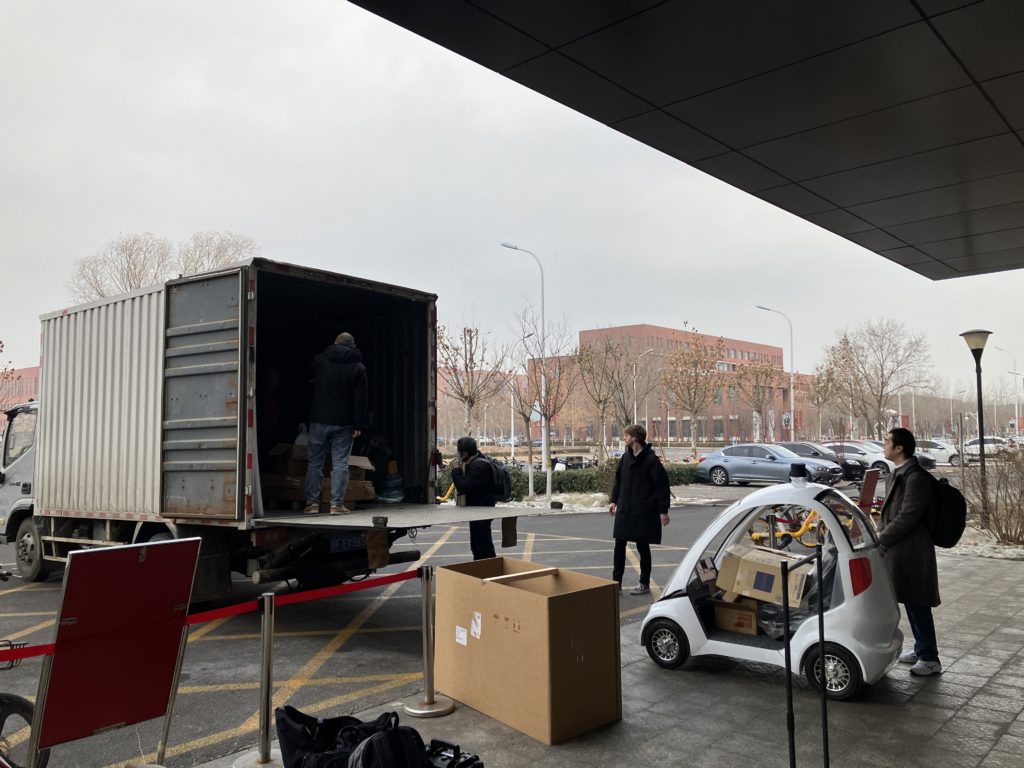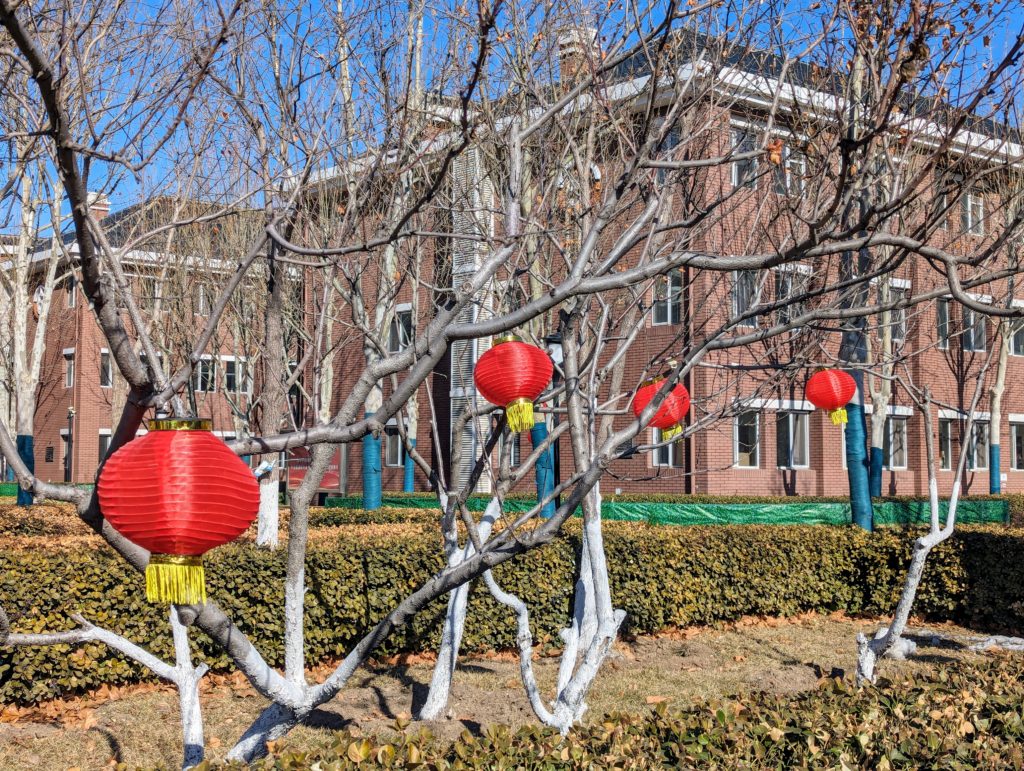At the beginning of 2024, we spent about three weeks in Tianjin, China conducting prototype vehicle tests, culminating in a demonstration for invitees.

In the first half of our stay, we were based at Tianjin University of Technology, where we conducted collaborative research, including preliminary tests at Tianjin Binhai New Area Elderly Care Facility. The latter half of the stay was to focus on deploying our prototypes and refining their control logic on-site at the facility.

[Tianjin Binhai New Area Elderly Care Facility]
This facility, spanning 55,000 square meters, stands as one of the largest and most comprehensive elderly care facilities in the Beijing-Tianjin-Hebei region. With a commitment to providing a secure living environment for older residents, all buildings within the facility are designed to be barrier-free, as well as being equipped with surveillance and emergency communications systems. In addition, the facility collaborates with surrounding hospitals, adopting an “integrated medical care” model to offer complete care services to residents.



Building on our initial tests, we invited external representatives, stakeholders from Tianjin Binhai New Area Elderly Care Facility, and individuals from various companies and universities. We made the most of the opportunity to showcase three vehicles within the facility, demonstrating various applications of autonomous driving and allowing invitees to see the technology at close hand.


Let’s take a look at each experimental vehicle!
[Vehicle 1] FUTU-RE Delivery Vehicle (FTD)
We introduced the role of the delivery vehicle to demo participants and showed it performing its intended role at the facility.



In this latest test, we demonstrated improved obstacle detection. Though the body design hasn’t changed since the first version, the introduction of a custom UI enabled a successful first-time drive. We incorporated 2D LiDAR and 3D LiDAR to enhance obstacle detection performance.
[Vehicle 2] Senior Mobility Vehicle (SMV)
This marked our first on-site experiment utilizing the latest hardware and its rapidly developing software platform. We simulated our first autonomous drive with passengers in a public space, following a test course that took us along the main access routes within the facility, demonstrating the senior mobility concept. During the tests, we successfully recorded biometric data from passengers with the vehicle’s onboard sensor.


Our R&D team members were happy to show off a scaled-down version of the design being developed for the vehicle, created in collaboration with a partner company specializing in rapid prototyping using a 3D printer.
We successfully navigated localization, route planning, and obstacle detection, autonomously driving from the facility’s gate near the hospital facility on the north side of the premises, picking up passengers, making a U-turn, and returning. Looking ahead, we plan to conduct detailed tests within the facility, adjusting the vehicle design based on the results. Our focus remains on ensuring a quiet and smooth ride for our passengers. We continue to engage in day-to-day research and development for this purpose.


[Vehicle 3] Medicine Delivery
This self-driving vehicle is equipped with mecanum wheels for maximum maneuverability (fig. 1). Able to operate fully autonomously, a key target for the vehicle is to supplement resident medical staff in delivering medication to users within the facility.

During the experiment, we fine-tuned the maneuverability of the mecanum drive for confined spaces such as corridors. In an echo of the positive reaction we experienced at an earlier demonstration at Automotive Week 2023 in Helmond, NL, attendees in China expressed a keen interest in mecanum drive technology and future developments of our vehicle.

(Fig 1) What is a mecanum wheel?
It is a special wheel with rollers tilted at a 45-degree angle, and independent motors attached to the four corners of the wheel allow it to move freely while keeping its orientation fixed. In combination with a system of other mecanum wheels, this can offer a vehicle full 360-degree maneuverability.
Source: Wikpedia
In having invited guests present for a demonstration, we were provided a valuable opportunity to debate the future of mobility and exchange opinions with local stakeholders.
Here are some thoughts shared by participants!

“With healthcare features, residents find it easier to interact, and awareness of health is heightened. It seems promising not only for improving the mobility of the elderly but also for mental care.”
“The distance from residents’ rooms to the delivery area within the facility is long, and the packages are heavy, but currently, we are reliant on nurses to carry parcels to their recipient. Using the Delivery Vehicle, we could reduce the burden on nurses.”


“The introduction of autonomous vehicles can address the issues of understaffing in elderly care facilities, along with issues resulting from the aging of nursing staff. We are looking forward to future developments.”
During the second phase of the experiment, our engineering team showcased their individual capabilities, enhancing current developments and identifying next steps based on participant feedback. Encouraged by the feedback we received, we are accelerating development towards realizing products intended for long-term deployment.


Beyond this, plans are underway to develop a vehicle-to-vehicle communication system to realize our “Total Vehicle Management” concept, offering solutions for an aging society, including support services and a range of healthcare services.
Our vehicles aim to make residential care facilities more comfortable and enhance the quality of life for both residents and staff. We will continue to focus on how the introduction of our vehicles can have a positive impact on both their users and those around them, advancing research and development accordingly.
This spring, we plan to exhibit at the “Seventh World Intelligence Congress” in China and will be carrying our further demonstrations.

Let’s all of us look forward to a future of newer and better mobility!



